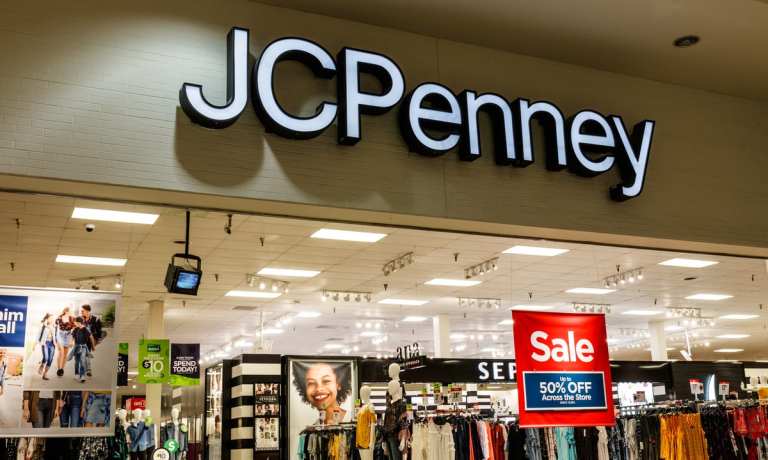JCPenney Is Getting A New Start In 2021, But Its Old Problems Remain

JCPenney is starting the new year with a post-Chapter 11 restart, new owners, new financing and soon will have a new CEO. But the old problems that have faced Penney and other mall-based department stores remain, and it’s not clear how (or if) the company will solve them — or even if it will survive long-term.
“JCPenney is a failed state. I think it’ll linger for a while as long as it serves the needs of its new owners, [but] the noise they’ve made about bringing the company back — that’s all public-relations speak,” Mark Cohen, a Columbia Business School professor and former CEO of Sears Canada, Bradlees and the Lazarus department-store chain, told PYMNTS in an interview.
CEO Jill Soltau departed last week after two years at the helm of the struggling retailer, which emerged from Chapter 11 bankruptcy in December after a seven-month reorganization. Stanley Shashoua, chief investment officer at new Penney co-owner Simon Property Group, will serve as interim CEO until the chain finds a permanent chief.
Simon and Brookfield Asset Management, two large mall owners that held many of Penney’s leases, bought the firm out of bankruptcy, joined by Authentic Brands as a “strategic partner.” The deal includes access to about $1.5 billion in new financing for JCPenney, and its new owners are talking positively about the famous chain’s future.
“We are excited to help lead the turnaround of a storied institution while saving tens of thousands of jobs and continuing to serve over 35 million customers,” said Brian Kingston, CEO of real estate at Brookfield. “Along with our partner Simon, we have a successful blueprint in place to deploy our collective operational expertise and industry relationships to transform JCPenney through new innovations and offerings.”
But the chain faces a list of problems longer than the line at check-out on Christmas Eve.
For instance, JCPenney reportedly hasn’t turned a profit since 2010, and its annual sales have fallen every year since 2016. The chain lost $1.3 billion in 2020’s first 10 months, up 345 percent from the already high $295 million of red ink it saw in the same period the previous year.
JCPenney — which has already closed hundreds of stores over the years — also plans to shutter about a third of its remaining sites over the next two years, taking it down to about 600 locations.
Cohen believes Simon and Brookfield bought the chain mostly to keep it from going under and leaving many malls without JCPenney as an anchor tenant.
“It serves their purposes to avoid several hundred of their anchor locations going dark in addition to the ones that have already gone dark,” he said. “When the anchor tenant’s parking [lot] is empty, the mall looks like it’s out of business.”
Cohen added that many small, specialty retailers in malls have clauses in their leases that allow them to leave or at least renegotiate terms if the site’s anchor tenant leaves and isn’t replaced. He said keeping JCPenney in business and specialty retailers from leaving lets Simon and Brookfield “avoid the empty restaurant syndrome” — where an empty restaurant stays empty because everyone assumes it’s no good.
Cohen believes that’s why Simon, Brookfield and Authentic Brands recently teamed up to buy the struggling Forever 21 chain, and why Authentic Brands and another partner bought Brooks Brothers. He added that Authentic Brands could use JCPenney stores as a place to sell goods for such chains and others that it owns “whether they belong there or not.”
On the plus side, Cohen sees a few other modest-priced retailers picking up business amid JCPenney’s woes.
For example, Cohen said the virtual collapse of both JCPenney and Sears “has propped up Macy’s and Kohl’s. And now with Macy’s is starting to look like it’s hanging on by its fingertips, Kohl’s will be the big benefactor in the moderately priced space.”
But large brick-and-mortar chains of all sorts have their work cut out for them. For example, Mastercard’s recent SpendingPulse report found that department stores saw a 10.2 percent drop in overall sales during the pandemic-tinged holiday, while their online sales only grew 3.3 percent.
“There will be survivors within the department stores, [but] they’ve got to create an experience and differentiated product,” former Saks Fifth Avenue CEO Steve Sadove, now a Mastercard special adviser, recently told PYMNTS CEO Karen Webster. “They’ve got to come to a different model to do it — not easy to do, and it hasn’t been done [yet].”